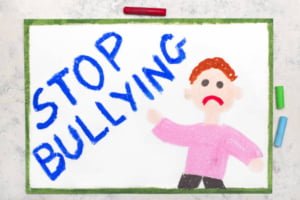
October is the National Bullying Prevention Month, this is a time to focus and raise awareness on bullying – it is also a reminder that students, parents, teachers, and school administrators all play a role. Bullying, often noted as an example of aggressive, disrespectful, and deviant behavior. According to Center on Positive Behavioral Interventions and Supports, they state that most of the harmful behavior and bullying tend to happen due to the lack of attention, praise, or less established social status from peers, by-standers, or even the victim.
Bullying can happen in many different forms, including but not limited to physical violence (i.e., punching, beating, hitting), verbal assault (i.e., name calling, teasing, threats), emotional (i.e., social exclusion, threats, intimidation using gestures), racist bullying, sexual harassment and/or assault, cyberbullying (i.e., hate messages, threats, online harassment, impersonation), and hazing. As a matter of fact, multiple surveys have shown that 25% to 30% of students report experiencing bullying behavior in school. In which, both students who engage in bullying and those who experience bullying are less likely to succeed academically. As bullying is most likely to involve student-to-student interaction, sometimes the warning signs may be overlooked.
Warning Signs:
| Child may be Bullied | Child may be A Bully |
| Torn, missing pieces, damaged clothing (including other belongings) | Shows positive views and attitudes towards violence |
| Unexplained scratches, cuts, and bruises | Often displays aggression towards parents, teachers, and others |
| Shows resistance or seems afraid of going to school | Easily hot tempered, impulsive, and frustrates |
| Unexplained excuses to avoid going to school | Has a need to control and dominate situations and people |
| Sad, moody, teary, or depressed when coming home from school | Tends to test boundaries, limits, and break rules |
| Poor sleep quality and loss of appetite | Poor sleep quality and loss of appetite |
| Appears anxious and may have low self-esteem | Tends to show less sympathy to those who are bullied |
| Loss of interest in schoolwork and/or unexplained sudden drop in grades | Loss of interest in schoolwork and/or unexplained sudden drop in grades |
What can I do as a parent?
If you suspect that your child may be bullied, it may be difficult to approach your child as they may not be ready to share with you just yet. Let your child know that you care for them and that you want to provide support. Bullying is a sensitive topic for both the victims and bullies, try asking subtle questions to probe for more information.
- “I’ve heard about bullying in the news lately, is that going on at your school?”
- “I’m worried about you, are there any kids at school who treat you differently, in a bad way?”
- “Who do you sit with at lunch and on the bus?”
- “Are there any kids at school who you don’t like? Why don’t you like them? Have they done something mean to you?”
It is recommended to talk to your child’s school. Set up an appointment to talk with their teachers, as teachers are likely to be in the best position to understand the relationship dynamics between the child and their peers. Here are some guiding questions to ask the teacher:
- “How does my child get along with their peers?”
- “Have you noticed or suspected that my child is being bullied by their peers?”
- “Who does my child usually hang out with during their free time?”
Addressing Cyberbullying
Warning signs could apply to both victims and perpetrators of cyberbullying. Your child may not tell you about their bullying online or offline. Cyberbullying does not require face-to-face contact, it can happen anytime, anywhere. Most of the times, cyberbullying happens anonymously, which can be huge since it’s harder to notice or address.
- Talk to your child – have a discussion on cyberbullying with your child calmly, without judgments and avoid high emotions. It is important to help your child understand it’s not their fault, provide positive affirmations and remind your child of the positive attributes to be proud of.
- Revenge is not a good idea – let your child understand that revenge against a bully is not encouraged, it could worsen things and get more people involved. Instead, discuss the resolution process. Talk to them about the steps they can take and what they can do to deal with cyberbullying. For instance, you may want to keep the evidence before the perpetrator deletes cyberbullying content, or you may want to guide your child to block the user online.
- Set appropriate privacy settings and parental controls – besides blocking a bully on social networking application, it is recommended to take a look at the privacy settings of your child’s online accounts. Certain social networking applications and phone devices do allow setting stricter privacy settings to increase your child’s privacy and safety online.
Helpful Resources:
- Stop Bullying
- What to do if Your Child is being Bullied and Resources
- STOMP Out Bullying – Parents Page
- How to Understand and Handle Cyberbullying
By, Jessica Lau, EAP Counselor
